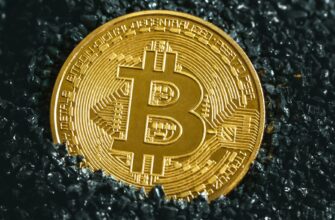- Introduction to Cryptocurrency Safety
- Choosing a Secure Cryptocurrency Exchange
- Wallet Security Essentials
- Step-by-Step Purchase Process
- Ongoing Security Best Practices
- Red Flags and Scam Avoidance
- FAQ: Safe Cryptocurrency Purchases
- What’s the safest payment method for buying crypto?
- Should I use crypto ATMs?
- How do I verify an exchange’s security?
- Are decentralized exchanges (DEXs) safer?
- What if I suspect unauthorized access?
- Conclusion: Security as Priority One
Introduction to Cryptocurrency Safety
With cryptocurrency adoption surging, knowing how to securely buy digital assets is crucial. This guide provides actionable steps to protect your investments from scams, hacks, and common pitfalls. Follow these security-first practices to navigate the crypto landscape with confidence.
Choosing a Secure Cryptocurrency Exchange
Your exchange is your first line of defense. Prioritize platforms with:
- Regulatory compliance (FINRA, FCA, or equivalent licenses)
- Cold storage for 95%+ of customer funds
- Two-factor authentication (2FA) enforcement
- Proof-of-reserves audits
- Insurance coverage against breaches
Top-rated secure exchanges include Coinbase, Kraken, and Gemini. Always verify domain URLs to avoid phishing sites.
Wallet Security Essentials
Never store large amounts on exchanges. Use these wallet solutions:
- Hardware wallets (Ledger, Trezor) for long-term holdings
- Open-source software wallets (Exodus, Electrum) with verified downloads
- Multi-signature wallets requiring multiple approvals for transactions
Always write recovery phrases on paper—never digitally—and store in fireproof locations.
Step-by-Step Purchase Process
- Verify identity: Complete KYC with government ID
- Fund securely: Use bank transfers instead of debit cards for lower fraud risk
- Enable security features: Activate 2FA and withdrawal whitelisting
- Buy strategically: Use limit orders to avoid price slippage
- Withdraw immediately: Transfer coins to your private wallet within 24 hours
Ongoing Security Best Practices
- Use unique 16+ character passwords with password managers
- Verify wallet addresses via QR codes instead of copy-pasting
- Regularly update wallet software and device OS
- Never share seed phrases or private keys
- Monitor transactions with blockchain explorers like Etherscan
Red Flags and Scam Avoidance
Recognize these danger signs:
- “Guaranteed” returns or pressure to act immediately
- Unsolicited investment offers via social media
- Exchanges without transparent fee structures
- URLs with subtle misspellings (e.g., Coinbasse.com)
- Requests for crypto payments to “unlock” funds
FAQ: Safe Cryptocurrency Purchases
What’s the safest payment method for buying crypto?
Bank transfers (ACH/SEPA) are most secure. Avoid wire transfers and credit cards due to irreversible transactions and high fees.
Should I use crypto ATMs?
Generally avoid—they charge 10-15% fees and lack regulatory oversight. Use only for small, urgent purchases after verifying machine legitimacy.
How do I verify an exchange’s security?
Check independent audits (e.g., CertiK), review past security incidents, confirm SSL certificates, and search regulatory databases for licenses.
Are decentralized exchanges (DEXs) safer?
DEXs reduce custodial risk but require advanced technical knowledge. Beginners should start with regulated centralized exchanges.
What if I suspect unauthorized access?
Immediately freeze accounts, transfer funds to cold storage, replace all passwords, and contact the exchange’s security team. Report theft to IC3.gov.
Conclusion: Security as Priority One
Protecting your cryptocurrency starts with disciplined habits: vet exchanges rigorously, control your private keys, and maintain operational skepticism. By implementing these layered security measures, you position yourself to safely participate in the digital asset revolution. Always prioritize safety over convenience—your financial sovereignty depends on it.








